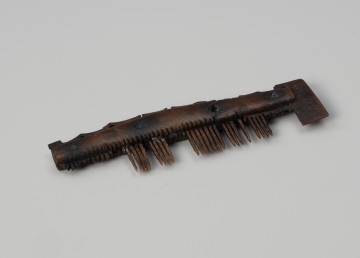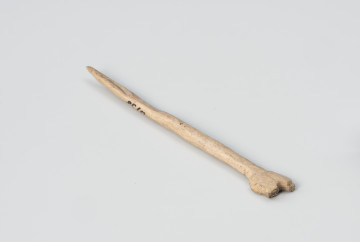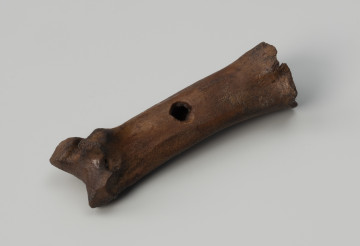
One sided comb
801 — 1201
National Museum in Szczecin
Part of the collection: Middle Ages
Horn and antler working was one of the most flourishing crafts in the early and late Middle Ages. The antlers, mostly from deer, were used to make beautiful, often very richly adorned items, such as single- or multiple piece combs with sheaths, knife scales, sickle sheaths, pins, beads, board game figurines and many other items of everyday use, including cone-shaped spacer found in Pomerania from the 9th to the 14th centuries, most popular in the 10th–12th centuries. They were usually made in specialised comb-making workshop from the waste and remains from comb production. Antlers were relatively easy to process. The first step was to soften them, usually by boiling them in water. Axes, saws, knives, chisels, augers, files or lathes were used in the subsequent processing steps. Finished spacers were used to strengthen wooden handles of knives or other iron tools. The surface of the spacer found in Kamień bears a decoration – a simple ornament comprising lines and zig-zags applied with a sharp tool.
Grzegorz Durdyń
Author / creator
Dimensions
cały obiekt: height: 1.6 cm
Object type
mount (fitting), tool
Technique
drilling, planing, cutting, softening
Material
antlers
Origin / acquisition method
field research
Creation time / dating
Creation / finding place
Owner
Muzeum Narodowe w Szczecinie
Identification number
Location / status

801 — 1201
National Museum in Szczecin

800 — 1200
National Museum in Szczecin

1001 — 1201
National Museum in Szczecin
DISCOVER this TOPIC
National Museum in Szczecin
DISCOVER this PATH
Educational path